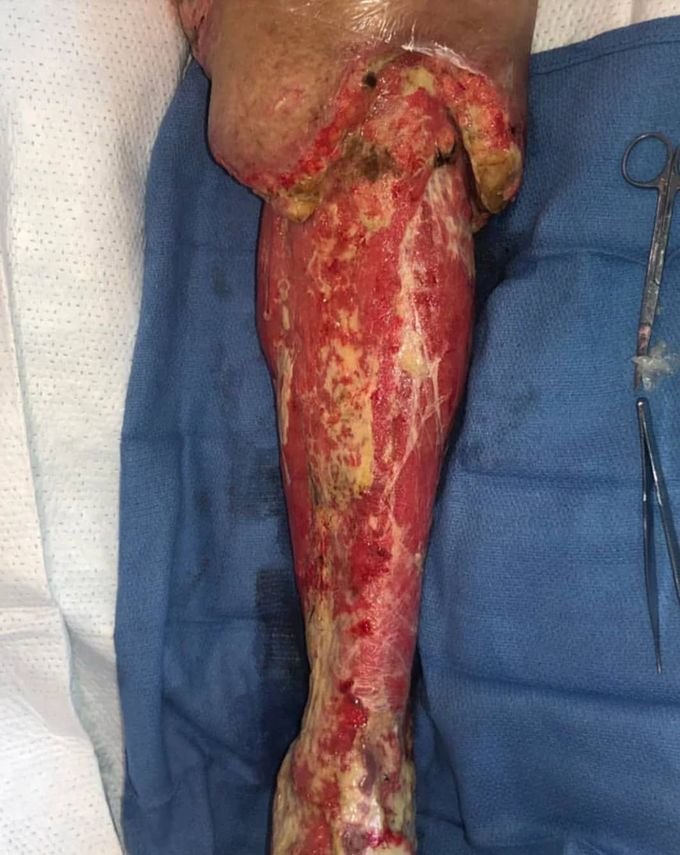


Case of necrotizing fasciitis of the leg, post debridement.
This started out as a small venous ulcer on the medial ankle. When the patient was admitted with symptoms of sepsis, there were already signs of extensive soft tissue necrosis extending up the calf and to the distal thigh. After debridement, the lower leg was neurovascularly intact, but with nearly all of the subcutaneous tissue and fascia removed from the mid foot to the knee. Necrotizing fasciitis is a rapidly progressive inflammatory infection of the fascia, with secondary necrosis of the subcutaneous tissues. It is a severe disease of sudden onset that spreads rapidly. Symptoms include red or purple skin in the affected area, severe pain, fever, and vomiting. The most commonly affected areas are the limbs and perineum. Typically, the infection enters the body through a break in the skin such as a cut or burn. Risk factors include poor immune function such as from diabetes or cancer, obesity, alcoholism, intravenous drug use, and peripheral artery disease. Surgical debridement (cutting away affected tissue) is the mainstay of treatment for necrotizing fasciitis. Early medical treatment is often presumptive; thus, antibiotics should be started as soon as this condition is suspected. Credit: villageidiot1984 at reddit.com . Tag a friend and follow us at @Medicalpedia

